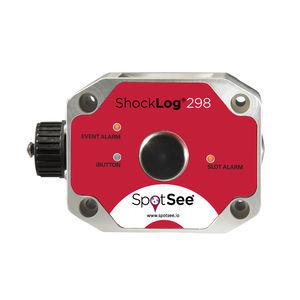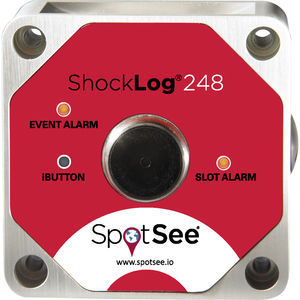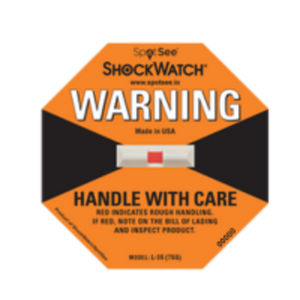

- Company
- Products
- Catalogs
- News & Trends
- Exhibitions
Impact indicator MAG 2000labelreusable


Add to favorites
Compare this product
Characteristics
- Measured value
- impact
- Display
- label
- Other characteristics
- reusable
Description
The ShockWatch MAG 2000 impact indicator is a cost-effective, resettable and reusable device designed to monitor the handling of fragile goods and freight containers greater than 500 lbs. The device is also widely used on rail cars and trucking fleets to monitor for excessive impacts during humping or latching.
The MAG 2000 utilizes two tuned and highly sensitive magnets. When an out-of-tolerance impact is experienced, the magnets are forced out of alignment clearly indicating the angle and severity of impact. A uniquely designed key is supplied to unlock the cover on the unit. This key allows the product to be reset after activation and resists tampering.
EMPOWER LOGISTICS VISIBILITY WITH SHIPPING DAMAGE INDICATORS
Heavy freight needs more oversight than a typical impact indicator can deliver. Whether you’re shipping architectural glass, electrical transformers, autos, medical imagers, drilling equipment, or other heavy cargo, if it could be damaged by impacts, it needs monitoring.
On the outside, heavy equipment may seem sturdy, but internal components and structures can be damaged by impacts caused by crane accidents, forklift errors, freight car coupling, and miles of rough roads. If cargo is damaged, it’s better to know about that damage before it is put into service.
USE IMPACT LABELS TO AVOID UNPLANNED DAMAGE AND DOWNTIME
SpotSee’s ShockWatch MAG 2000 impact indicator can help you identify damage before it becomes a problem. This is a cost-effective, reusable shipping damage indicator designed specifically for cargo that weighs 500 pounds or more. It measures shocks in 0.5G increments between 0.5 and 20Gs.
VIDEO
Catalogs
Mag-2000
2 Pages
Related Searches
- Analog panel meter
- Temperature panel meter
- Easy to install panel meter
- Indicator for the food industry
- Time panel meter
- Label indicator
- Modem module
- Logistic indicator
- Irreversible indicator
- Indicator for medical applications
- Tilt indicator
- Electronic panel meter
- Indicator for pharmaceutical applications
- Indicator for chemical applications
- Impact indicator
- Tube indicator
- Water treatment indicator
- Reversible indicator
- Tamper-proof indicator
- Automotive indicator
*Prices are pre-tax. They exclude delivery charges and customs duties and do not include additional charges for installation or activation options. Prices are indicative only and may vary by country, with changes to the cost of raw materials and exchange rates.












